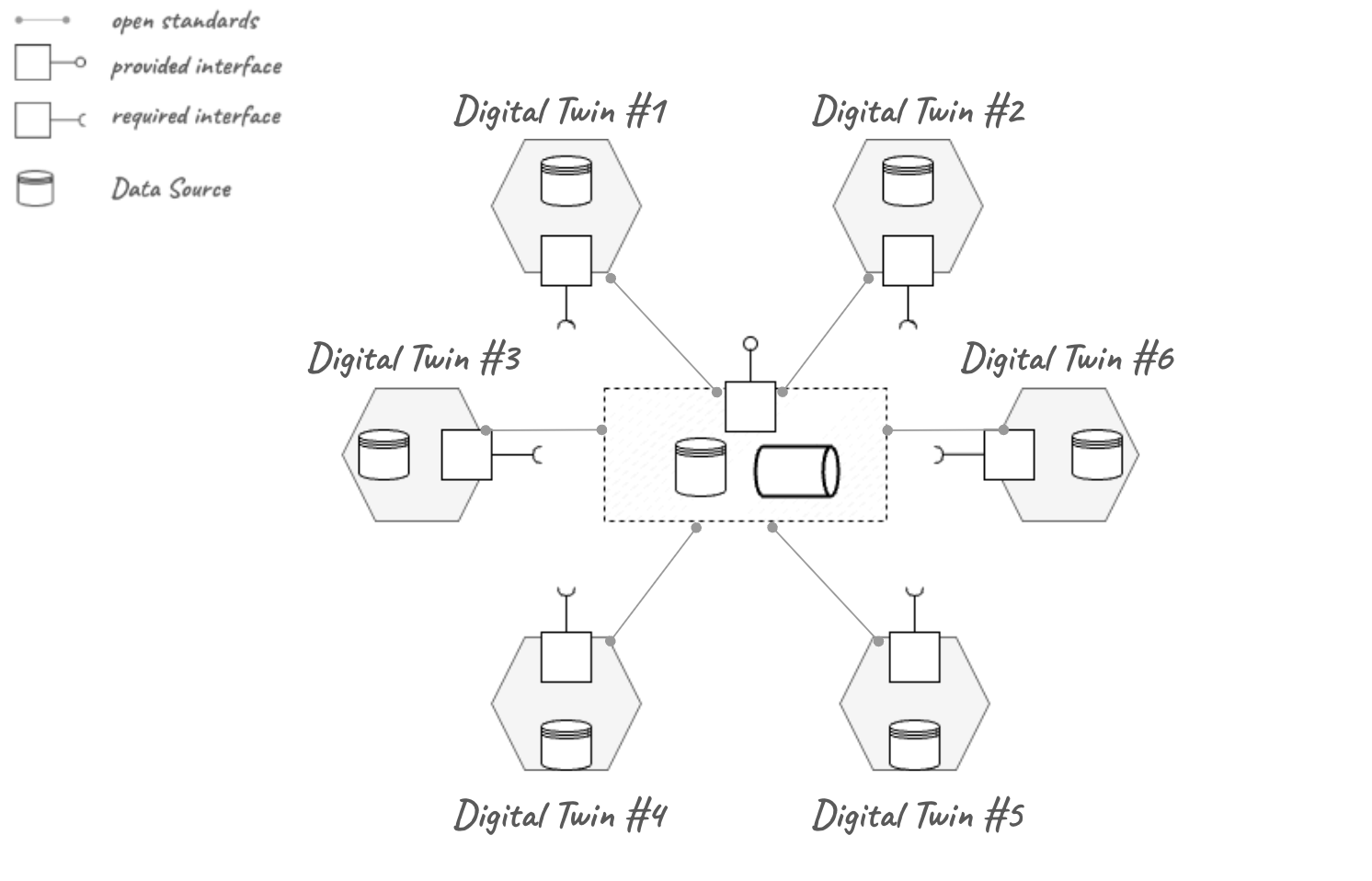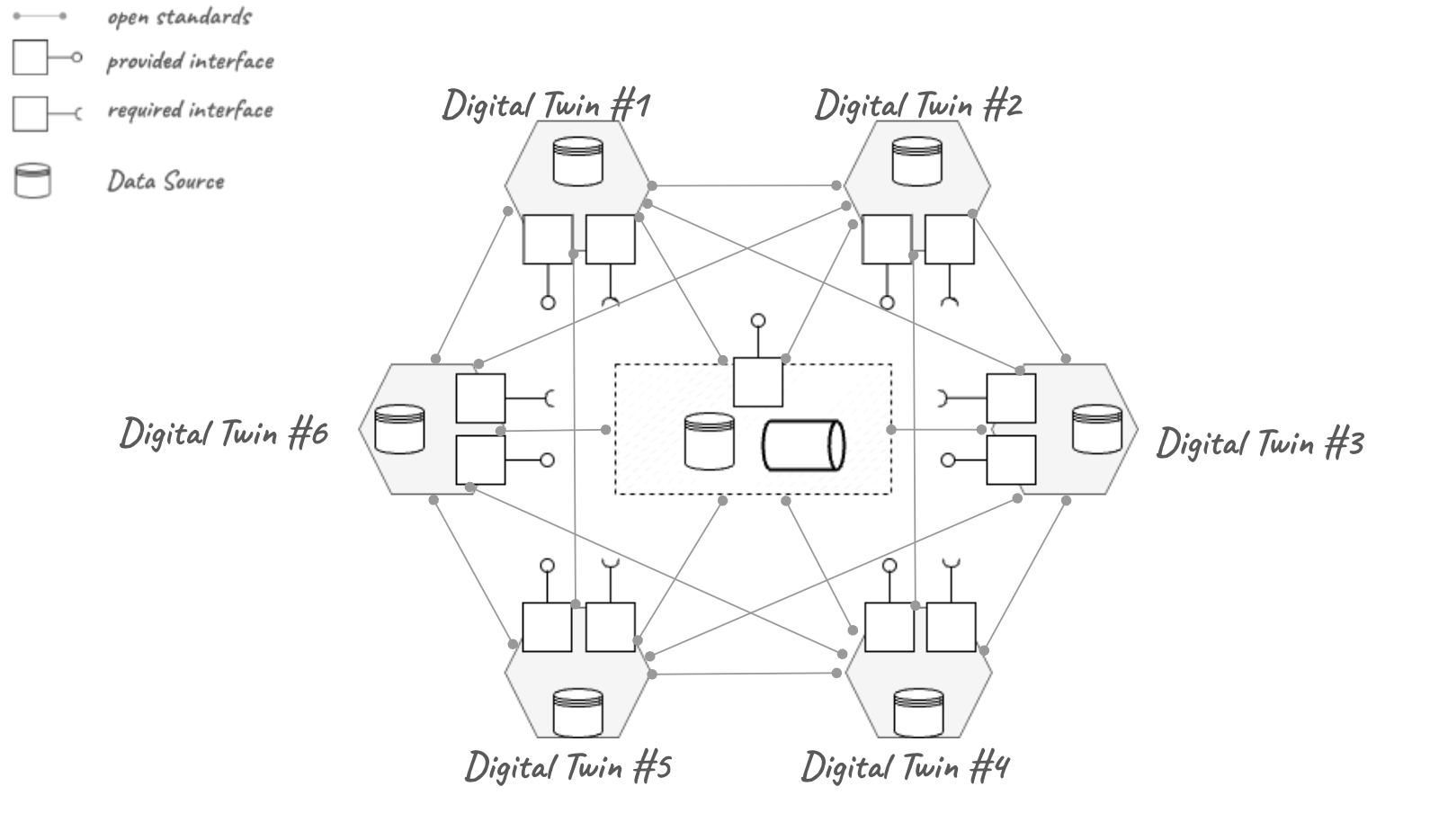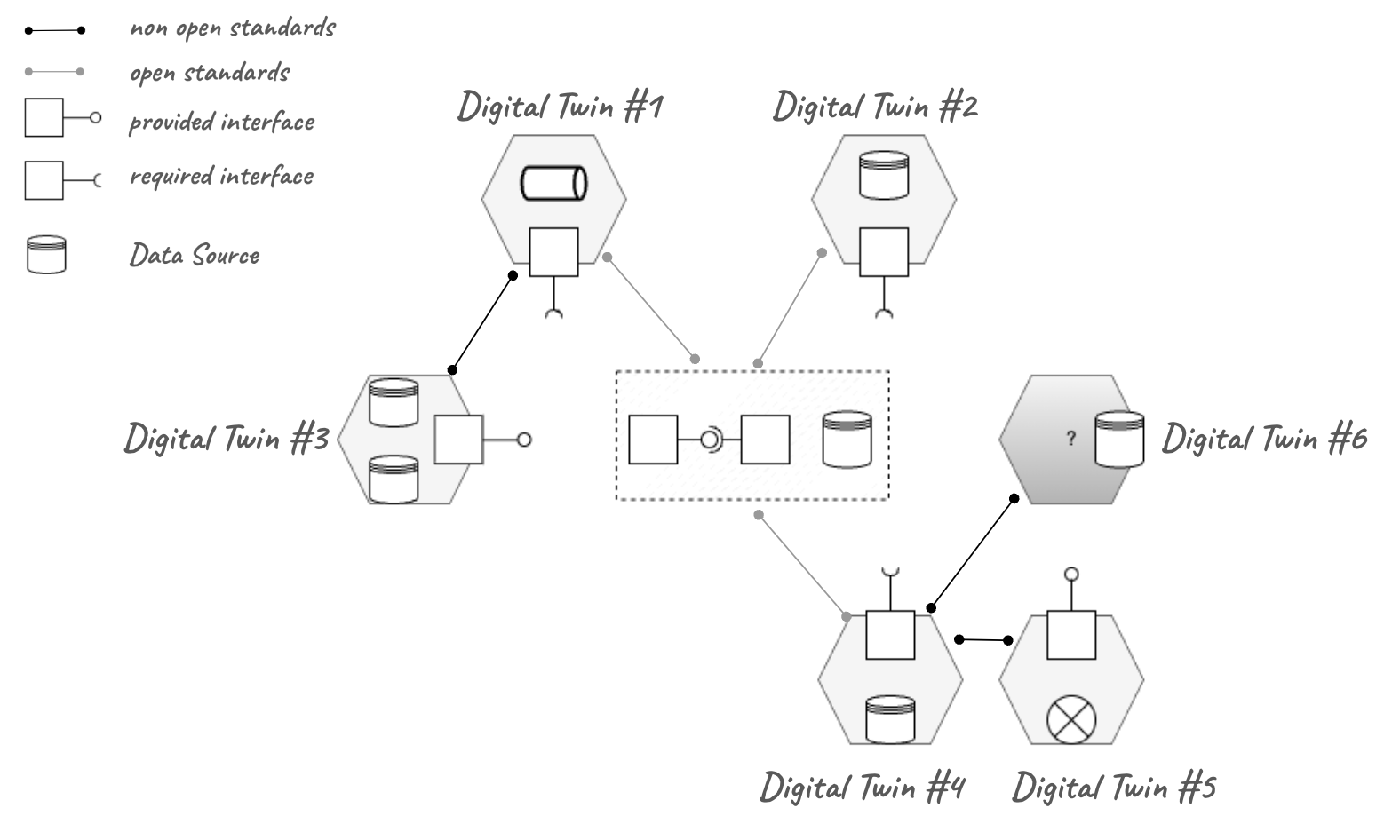The concept of Digital Twins Ecosystems merges as a paradigm that captures the complexity and interconnectedness of modern digital twins systems. It presents an ecosystem where diverse systems converge synergistically, creating emergent value that surpasses what isolated components can achieve alone. Within this blueprint, different categories of ecosystems range from more centralized solutions, known as Unified Twin Ecosystems, to more distributed configurations, termed Distributed Twin Ecosystems. Positioned between these two is the Harmonized Twin Ecosystem, which offers a balanced approach, integrating both centralized guidance and distributed execution. This spectrum of ecosystems facilitates various degrees of collaboration and integration, aiming to optimize industrial operations and innovation.

Table of contents
Open Table of contents
Unified Twin Ecosystem (UTE)
Represent a centralized digital twin ecosystem where core digital twin capabilities and models are established within a central architecture, allowing for industry-specific or domain-specific customizations. For instance, a foundational digital twin model for a smart city can be developed, with the flexibility to integrate specialized models for traffic management, utilities, or public services. This integration uses standardized communication protocols to ensure seamless interaction between each digital twin and the central architecture.
-
The Central Digital Twin Services pattern mandates that digital twin capabilities be consistently managed and distributed via a central architecture. This structure enables better orchestration and management of data-dependent domains.
-
The Centralized architecture for Digital Twins not only enhances governance over capabilities but also ensures that specific functionalities are distributed according to established standards. For example, you can manage the distribution of specialized capabilities more effectively.
-
The Centralized Digital Twin architecture can be enhanced with Master Data Management and Data Quality tools to support improved data governance and quality. This integration results in increased governance and overhead, ensuring a robust and efficient digital twin ecosystem.
PROS
- Consistent core processes
- Enable domain specialisation
- Encourage self-service
- Offers flexibility
CONS
- Increased management overhead
- Requires governance

Harmonized Twin Ecosystem (HTE)
An intermediate strategy could be employed where digital twin models from various domains or industries are synchronized through unified policies to ensure interoperability and security. This includes standard communication protocols between the digital twins, such as sharing data models between digital twins to enable a consolidated perspective. This approach leverages common capabilities and standards to establish fundamental interoperability and compatibility.
- Allows different groups within an organization to manage their own Digital Twins while adhering to shared policies and communication standards.
- The central digital twin architecture maintains a catalog of digital twins capabilities, including visualization, monitoring, and services for predictions or simulations.
- The central digital twin architecture outlines blueprints that cover baseline security, policies, capabilities, and standards.
- New Digital Twins are created based on these blueprints.
- Digital Twins instances can be tailored to meet specific business needs.
- Digital Twins are typically segmented by organizational division, business department, region, etc.
PROS
- Consistent core design
- Enable Digital Twin specialisation
- Encourage sef-service
- Offers organisational flexibility
CONS
- Increase management overhead
- Requires strong governance and catalouing

Distributed Twin Ecosystem (DTE)
This could indicate a decentralized strategy where each department or sector has full autonomy to design and deploy their unique digital twin models. This method may accelerate innovation but also risks fostering isolated systems and challenges with interoperability. For example, there might be separate digital twins for energy, water management, and infrastructure in the same city, developed without unified oversight. Each twin might operate on a point-to-point communication model where not all twins adhere to standardized protocols or share all information.
- High decentralization grants complete autonomy for groups to develop and use their own technological frameworks in diverse environments.
- Provides increased flexibility for specific domains, such as experimental projects or achieving faster market presence.
- May lead to significant political disputes concerning data control and the necessity for data sovereignty.
- Results in limited visibility across different platforms.
- Leads to incompatible communication interfaces between digital twins.
- Causes duplication of capabilities and elevated costs.
- Generates technological debt due to lack of common standards and integration difficulties.
PROS
- Offers flexibility
- Reduced time to market
CONS
- Poor visibility across platform
- Incompatible interfaces
- Capability duplication, increased costs
- Creates technology debt
